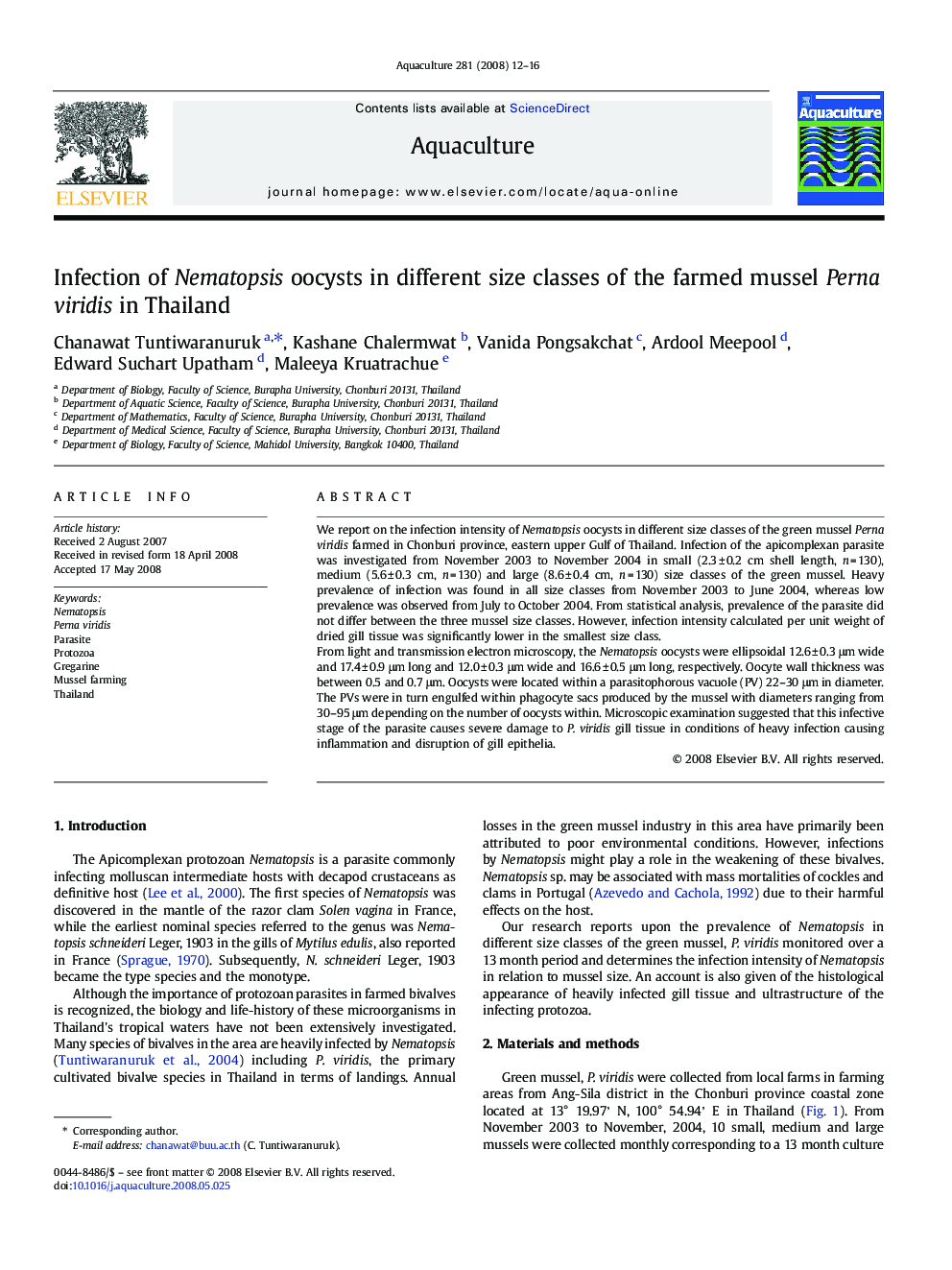| Article ID | Journal | Published Year | Pages | File Type |
|---|---|---|---|---|
| 2424508 | Aquaculture | 2008 | 5 Pages |
We report on the infection intensity of Nematopsis oocysts in different size classes of the green mussel Perna viridis farmed in Chonburi province, eastern upper Gulf of Thailand. Infection of the apicomplexan parasite was investigated from November 2003 to November 2004 in small (2.3 ± 0.2 cm shell length, n = 130), medium (5.6 ± 0.3 cm, n = 130) and large (8.6 ± 0.4 cm, n = 130) size classes of the green mussel. Heavy prevalence of infection was found in all size classes from November 2003 to June 2004, whereas low prevalence was observed from July to October 2004. From statistical analysis, prevalence of the parasite did not differ between the three mussel size classes. However, infection intensity calculated per unit weight of dried gill tissue was significantly lower in the smallest size class.From light and transmission electron microscopy, the Nematopsis oocysts were ellipsoidal 12.6 ± 0.3 μm wide and 17.4 ± 0.9 μm long and 12.0 ± 0.3 μm wide and 16.6 ± 0.5 μm long, respectively. Oocyte wall thickness was between 0.5 and 0.7 μm. Oocysts were located within a parasitophorous vacuole (PV) 22–30 μm in diameter. The PVs were in turn engulfed within phagocyte sacs produced by the mussel with diameters ranging from 30–95 μm depending on the number of oocysts within. Microscopic examination suggested that this infective stage of the parasite causes severe damage to P. viridis gill tissue in conditions of heavy infection causing inflammation and disruption of gill epithelia.
